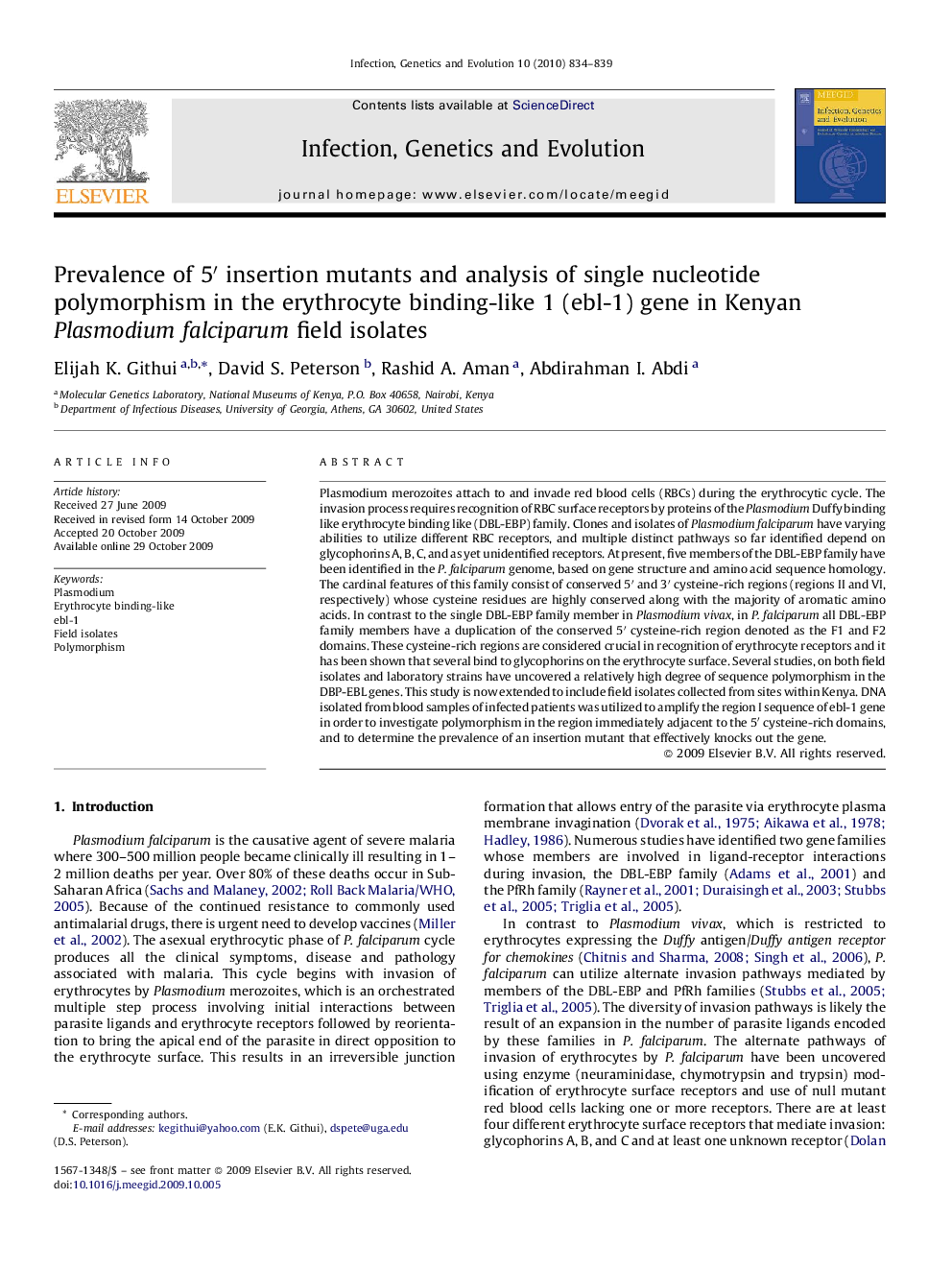| کد مقاله | کد نشریه | سال انتشار | مقاله انگلیسی | نسخه تمام متن |
|---|---|---|---|---|
| 2823184 | 1161376 | 2010 | 6 صفحه PDF | دانلود رایگان |

Plasmodium merozoites attach to and invade red blood cells (RBCs) during the erythrocytic cycle. The invasion process requires recognition of RBC surface receptors by proteins of the Plasmodium Duffy binding like erythrocyte binding like (DBL-EBP) family. Clones and isolates of Plasmodium falciparum have varying abilities to utilize different RBC receptors, and multiple distinct pathways so far identified depend on glycophorins A, B, C, and as yet unidentified receptors. At present, five members of the DBL-EBP family have been identified in the P. falciparum genome, based on gene structure and amino acid sequence homology. The cardinal features of this family consist of conserved 5′ and 3′ cysteine-rich regions (regions II and VI, respectively) whose cysteine residues are highly conserved along with the majority of aromatic amino acids. In contrast to the single DBL-EBP family member in Plasmodium vivax, in P. falciparum all DBL-EBP family members have a duplication of the conserved 5′ cysteine-rich region denoted as the F1 and F2 domains. These cysteine-rich regions are considered crucial in recognition of erythrocyte receptors and it has been shown that several bind to glycophorins on the erythrocyte surface. Several studies, on both field isolates and laboratory strains have uncovered a relatively high degree of sequence polymorphism in the DBP-EBL genes. This study is now extended to include field isolates collected from sites within Kenya. DNA isolated from blood samples of infected patients was utilized to amplify the region I sequence of ebl-1 gene in order to investigate polymorphism in the region immediately adjacent to the 5′ cysteine-rich domains, and to determine the prevalence of an insertion mutant that effectively knocks out the gene.
Journal: Infection, Genetics and Evolution - Volume 10, Issue 6, August 2010, Pages 833–838